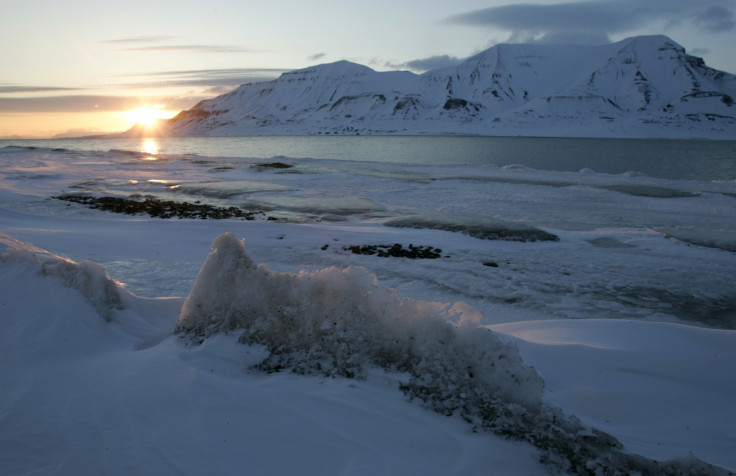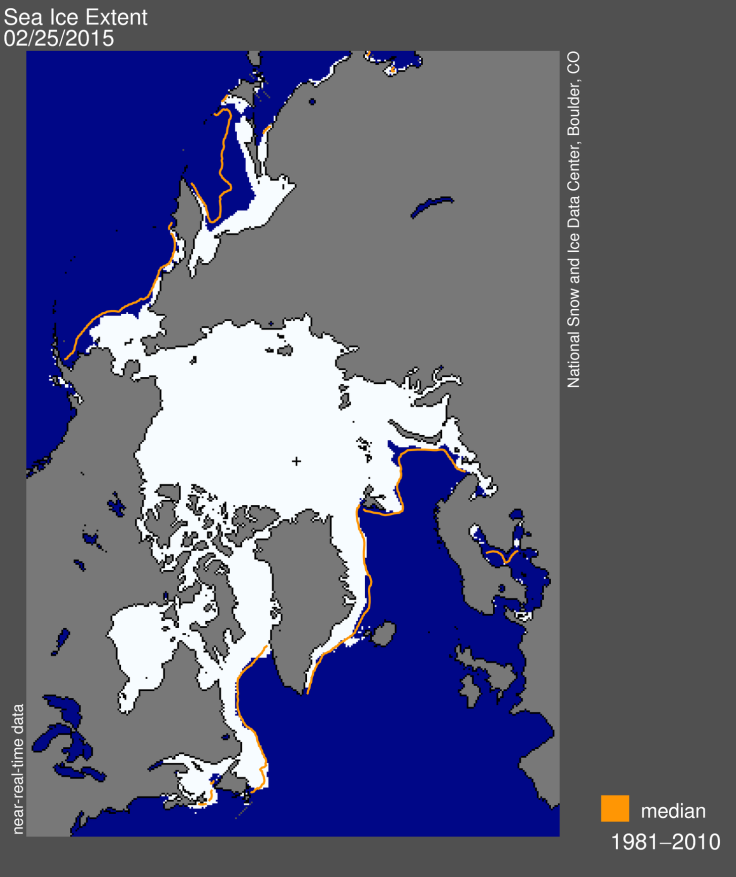Arctic sea ice hits record low in 35 years


Sea ice in the Arctic Ocean has fallen to the lowest recorded level for winter since 1979.
At 14.5 million sq km on February 25, the ice was at the maximum level for the year and has started to melt, says National Snow and Ice Data Center at the University of Colorado in Boulder.
Sea ice can sometimes surge later in the winter under particular conditions. "However," the agency notes, "it now appears unlikely that there could be sufficient growth to surpass the extent reached on February 25."
An unusually warm February in parts of Alaska and Russia is believed to have contributed to the low sea ice.
The amount measured this year is 130,000 sq km below the previous record winter low measured in 2011.
The next crucial aspect is to measure how much of the ice remains after the summer melt.
Studies have shown that the Arctic sea ice has thinned by 65% between 1975 and 2012 and that sea ice appears later in the autumn every year thanks to global warming.
Earlier studies
A more recent finding by researchers at the Scripps Institution of Oceanography was that the Arctic sea ice is melting twice as fast as previous climate models predict, decreasing from 52% to 48% from1979 levels.
Satellite data measuring the extent of Arctic sea ice (ocean area that's at least 15% ice) in the past few decades shows the area is declining by 3 to 4% every decade.
Soon the Arctic will be ice-free in late summer. While predictions first put that date as 2700, studies adding other feedbacks to the global warming model suggest that by 2500 the Arctic will open up new shipping lanes, making it easier to access the region's oil and gas!
In 2012, a study in Environmental Research Letters concluded that between 70 and 95% of the Arctic melt since 1979 has been caused by human activity. Global warming has caused the region to warm about twice as fast as the rest of the world.
The melting Arctic sea ice will not add to sea level rise as the ice has already displaced its own weight of water. The rise will happen when ice sheets on land masses like Greenland and the Antarctica melt.
Greenland's ice sheet can raise global sea levels by about 25 feet.
But melting of Arctic ice can further add to the global warming effect by absorbing incoming heat instead of reflecting it back when filled with ice.
While the Antarctic has registered some gains in ice cover, the accelerated sea ice loss in the Arctic over the last 35 years cannot be compensated by the ice gain down south, said Nasa scientists showing that there was a net loss of 13,500sq/m of sea ice every year.
© Copyright IBTimes 2025. All rights reserved.





















